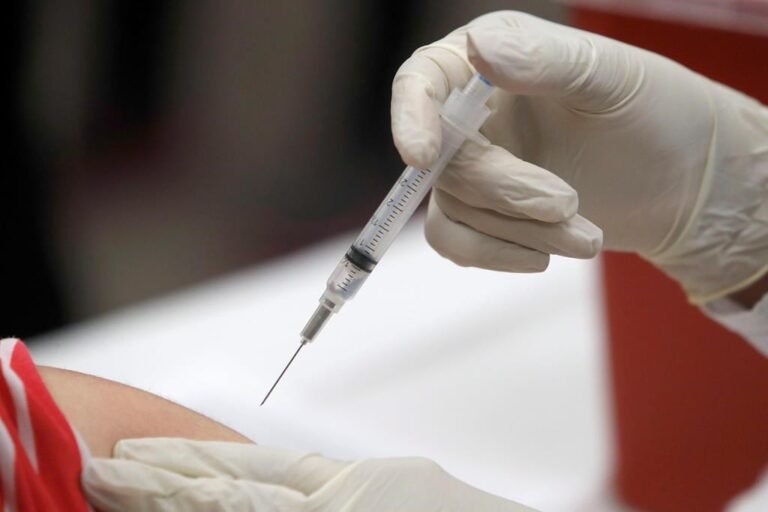Blog: Sustaining Quality Transparency While Accounting for COVID-19’s Unprecedented Challenges
Blog: Sustaining Quality Transparency While Accounting for COVID-19’s Unprecedented Challenges
bteicher_drupal
Jul 15, 2022
Recent reports have mischaracterized Medicare’s proposals to account for the impact of COVID-19 in its quality measurement programs as “hiding” important and useful patient safety data from the public. Here’s the reality — these proposed policies would evaluate hospitals rigorously and fairly while preserving meaningful transparency for patients, families and communities.
First, let’s clarify what the Centers for Medicare & Medicaid Services (CMS) has proposed. Using its annual payment rule for inpatient hospital payment, CMS proposed three interrelated policies for fiscal year (FY) 2023:
CMS would apply neutral payment adjustments (i.e., not reward or penalize) to hospitals under its Hospital Value-Based Purchasing (HVBP) and Hospital-Acquired Condition (HAC) Reduction programs;
CMS would continue to publicly report the results of five healthcare associated infection (HAI) measures used in both the HVBP and HAC Reduction programs; and;
For FY 2023 only, CMS would not publicly report the results of its patient safety indicator (PSI) measure, which would reflect performance from July – December 2019 and January – June 2021.
In other words, CMS’ proposals actually preserve the transparency of HAI measures, which are rigorously designed measures reflecting high priority safety issues for hospitals and patients. And, its other two proposals — not penalizing hospitals under HVBP and HAC, and suppressing PSI data — are simply sound policies that reflect the challenging reality of measuring and comparing hospital performance fairly during the COVID-19 pandemic.
Why CMS Must Account for the Impact of COVID-19 in its Measurement Programs
America’s hospitals’ and health systems’ strong commitment to sharing accurate, important quality information with the public has deep roots that long pre-date the COVID-19 pandemic. In fact, the CMS Care Compare website originates from a voluntary, hospital-led effort from 20 years ago to share measure data with the public. However, the pandemic has posed unprecedented challenges to how hospitals collect and submit quality data, and how CMS implements its quality measurement and value programs, which depend on assessments of how well each hospital did compared to other hospitals.
No quality measurement program, including CMS’, was ever designed with a once-in-a-century global pandemic in mind. However, CMS has spent the past two and a half years learning how COVID-19 has impacted care delivery, the diagnoses and severity of illness of patients being admitted to the hospital, and the ability of the agency to produce fair comparisons of performance among hospitals and the other health care delivery organizations it measures, reports on and reimburses.
We have learned that COVID-19 has been highly disruptive to how quality of care is measured in both direct and indirect ways. Clinically speaking, COVID-positive patients were much more complicated than those who were not, raising their risk of worse outcomes. Hospitals caring for large numbers of COVID-19 patients could, therefore, expect to perform significantly worse on many of CMS’ measures even when otherwise providing high quality care. Compounding these challenges even further, data have shown that COVID-19 has hit different hospitals at different times and with varying degrees of intensity, making it impossible to fairly compare all hospitals’ performance during a single timeframe.
In addition, COVID-19 also has had a range of indirect but far-reaching impacts. Hospitals have had to balance caring for repeated surges of COVID-19 patients while keeping their doors open to all others needing care. They also have contended with sicker patients with more complications who often had to spend longer periods of time in the hospital, operated with a finite number of caregivers and other workers due to the workforce shortage crisis, and managed through severe worldwide equipment and supply shortages and disruptions.
It is no surprise, then, that CMS’ data analyses have shown that hospital performance on many of its measures was significantly distorted throughout 2020 and 2021. This includes performance on the aforementioned PSI and HAI measures. Unfortunately, CMS’ normal mechanisms that could help account for differences in clinical risk across patients and hospitals are simply not feasible to implement. For example, CMS would have been hard pressed to “risk adjust” for COVID-19 patients because the diagnostic codes for COVID-19 were new and could not be applied retrospectively. The field also had evolving but incomplete information about the variation in the acuity of COVID-19 patients, and how that information is captured in billing data, the medical record and elsewhere.
Balancing Transparency, Fairness and Rigor
Faced with imperfect choices, CMS has developed several policies to account for the impact of COVID-19 to its measurement programs. Due to the incredible stress placed on our health care workforce, CMS made a difficult but correct decision to make the reporting of quality data optional for the first two quarters of 2020. This allowed caregivers to rightly focus on spending more time at the patient bedside and less time entering data. In 2021, CMS also implemented measure suppression policies, which simply means if CMS found that performance was distorted by the pandemic it could exclude it. In addition, as noted at the beginning of this blog post, we agree with CMS’ proposals to use the suppression policies for the HAC and HVBP programs for FY 2023.
So, why shouldn’t CMS assess HAC and HVBP bonuses and penalties as it normally does? CMS’ value programs are designed to compare hospital performance, and assess payment rewards and penalties based on those results. In fact, the HAC and HVBP programs result in hundreds of millions of dollars of bonuses or penalties for hospitals each year. Comparing hospital performance using measures distorted by the COVID-19 pandemic could mean portraying some hospitals as having average or poor performance when, in reality, their community, and particularly their hospital, was particularly hard hit by COVID-19. In other words, such an approach would provide misleading performance results to the public, and be fundamentally inaccurate and unfair to hospitals.
Why not simply publicly report the PSI measure? As CMS notes, several vital components of the PSI — including individual measure weights and parts of the risk and reliability adjustment models — were set using pre-pandemic data that do not account for the pandemic’s impact. As a result, any reported measure results likely would be unfairly skewed against hospitals highly impacted by the pandemic, and would result in misleading data for the public. In other words, the reporting of PSI data would not only fail to advance patient safety, but it actually could serve to undermine it by sharing inaccurate data with hospitals and the public alike.
In the midst of COVID-19, no policy choice is perfect, and in an ideal world, there would be mechanisms that could retrospectively account for COVID-19 impacts to quality measure performance. However, a one-year pause on the reporting of the PSI measure – whose results would otherwise be inaccurate and unusable for improvement purposes is not only consistent with a commitment to transparency, but important for maintaining the credibility of the information shared with the public.
America’s hospitals and health systems are committed to providing patients with high quality, safe and person-centered care. We are united in re-doubling our efforts to improve quality during and after the pandemic ends and to working with all stakeholders to preserve transparency in a thoughtful, data-driven way.
Akin Demehin is AHA’s senior director of quality and patient safety policy.





Leave a comment
You must be logged in to post a comment.